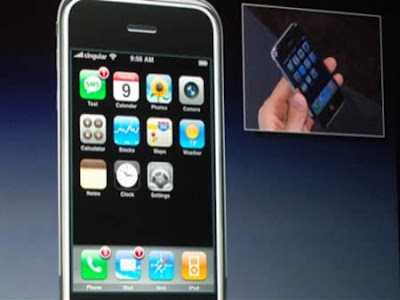Yes, it’ll cost you, and yes, Apple wants your SSN in iTunes. But you’ll want one anyway
Whatever plans I might have had for this week were put on hold by Apple’s full opening of iPhone’s kimono prior to the June 29 launch. I knew that Apple would hold back as much detail as it could until the last possible minute, but now that crates and crates of iPhones are sitting in the back rooms of AT&T Stores in strip malls across North America, and store staffs have been issued their riot gear and marching orders, it’d be silly to try to keep anything about iPhone under wraps.
Apple has answered most of the non-feature-related iPhone questions that I’d have asked on my readers’ behalf, but several remain open. I’ll give you a taste of the answered and unanswered questions here. The details that deadlines force me to leave out of this column will be in my Enterprise Mac blog. The grand detail will be in my InfoWorld Test Center review of iPhone, which will get underway as soon as Apple supplies an evaluation unit. That brings me to my first still-unresolved question: When will iPhone review units be sent out? I think that Apple’s decision on review unit timing comes down to its preference for first-line reviewers. Do Apple and AT&T want word of mouth from customers who have laid down their money for iPhone to hit first, or do they want reviews from plausibly objective journalists? This decision (probably made by the time you read this; check my blog) will be telling and potentially trendsetting in itself. Bloggers will buy iPhone for a shot at scooping us big guys on reviews, and of course, once they’ve spent their money and signed their 2-year contract commitment to AT&T, anything less than a glowing review is out of the question. Now for an answered question: What’s the absolute minimum cost of iPhone? Add it all up and it comes out to $2,034.75, not including taxes, fees and surcharges which, as anyone with a telephone can tell you, account for a healthy portion of one’s monthly bill. That’s the cost of a $499 iPhone, a two-year AT&T contract at $59.99 per month and a $36 activation fee.
Activation requires a Mac or PC iTunes client, and part of the process involves handing over your telco billing information, including your Social Security Number, to the iTunes Store. That’s a little squirmy, but hey, everybody from Radio Shack to the mall gondola guy tag you for your SSN when you buy a mobile phone.
AT&T’s iPhone rate plans are no longer a question either. Plans range from $59.99 to $99.99 and are clearly consumer-targeted plans. Daytime minutes are the most expensive part of the deal. iPhone is covered by Cingular’s roll-over policy on unused minutes, so even though the $59.99 plan has a skimpy 450 daytime minutes per month, you can bank them to some extent.
All plans include unlimited data service, which AT&T qualifies as “e-mail plus browser.”
Historically, that’s code for excluding the use of a handset for wireless Internet connection sharing. Until you hear otherwise from me, don’t bank on being able to tap your Xserve using Remote Desktop on your MacBook Pro with iPhone as your gateway. Still, iTunes can move files in and out of iPhone’s ample 4-8 GB non-volatile memory, and file uploads and downloads are much of the value of a cellular data gateway.
We now know that iPhone’s data service is EDGE rather than 3G. During periods of network calm, my T-Mobile EDGE service, using a BlackBerry 8800 as a gateway, hits ISDN download speed—128 kilobits/second—precisely. EDGE upload speed is slower than dial-up. iPhoners won’t be ripping around the Web at 3G’s typical 700 kilobits/second. Still, don’t be too disappointed. Most GSM/GPRS consumer phones surf at 9,600 bits per second, and EDGE’s coverage is wider than 3G’s.
One last question is answered, yet unanswered: Can you use iPhone without AT&T service, as a sort of Internet tablet-cum-PDA? Apple states that iPhone services “including iPod” require an active AT&T wireless subscription. I’d call that a no, but I can’t say for certain that iPhone powers up saying “don’t touch me until I’m activated.” Wireless hackers are more tenacious than all other varieties. If there is a way to use iPhone without activating it, or to flip it to another wireless operator’s service, it’ll be universal knowledge within two months of iPhone’s release.
It’s my job to find faults and shortcomings, and any $2,034.75 investment deserves scrutiny before it finds a place in your pocket, purse or holster. But I see no show-stoppers in the final details. So, sorry, naysayers, but Apple Stores and AT&T Stores will be mob scenes on June 29 at 6:00. If you actually touch an iPhone and you can afford one, you’re likely to buy it.




























